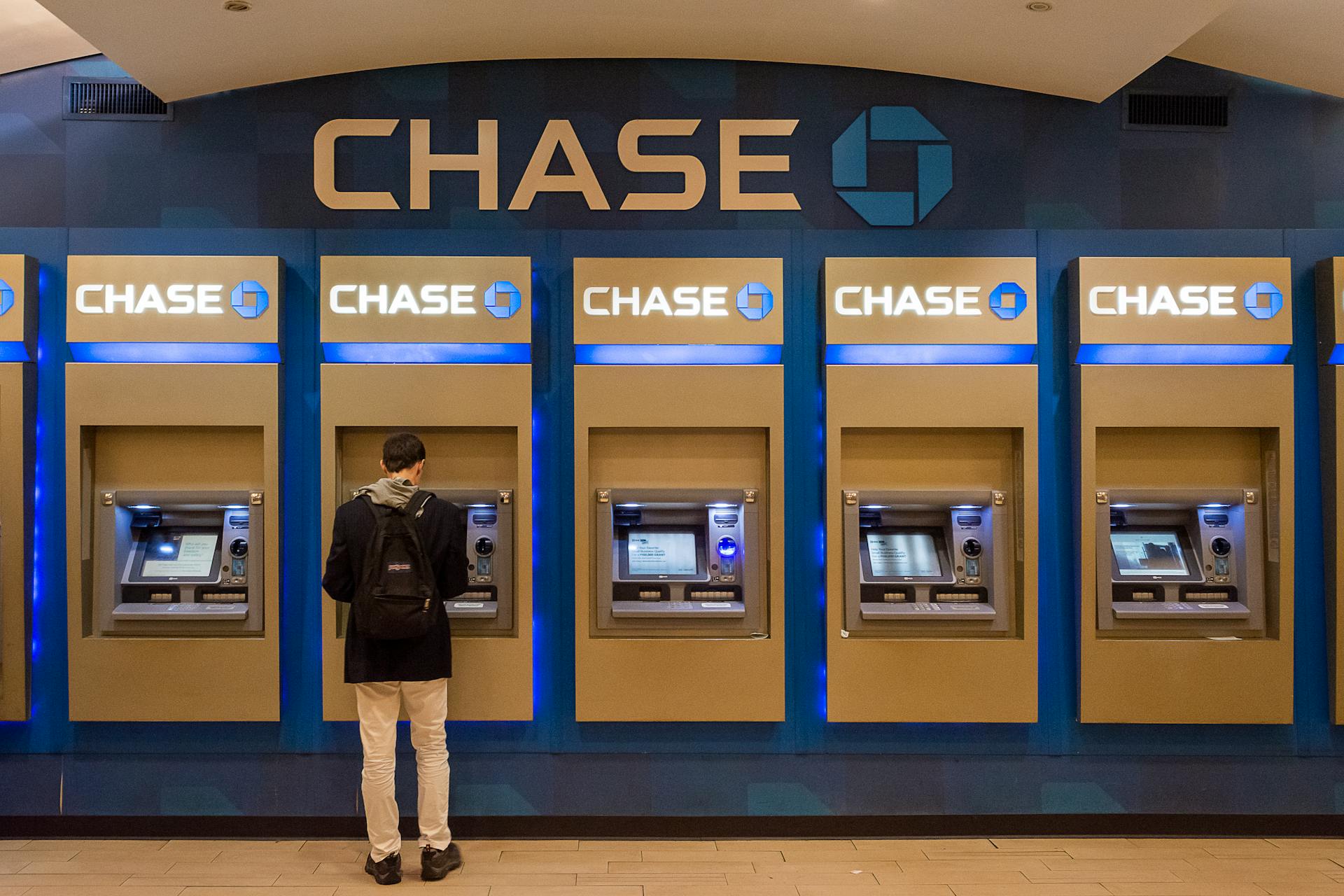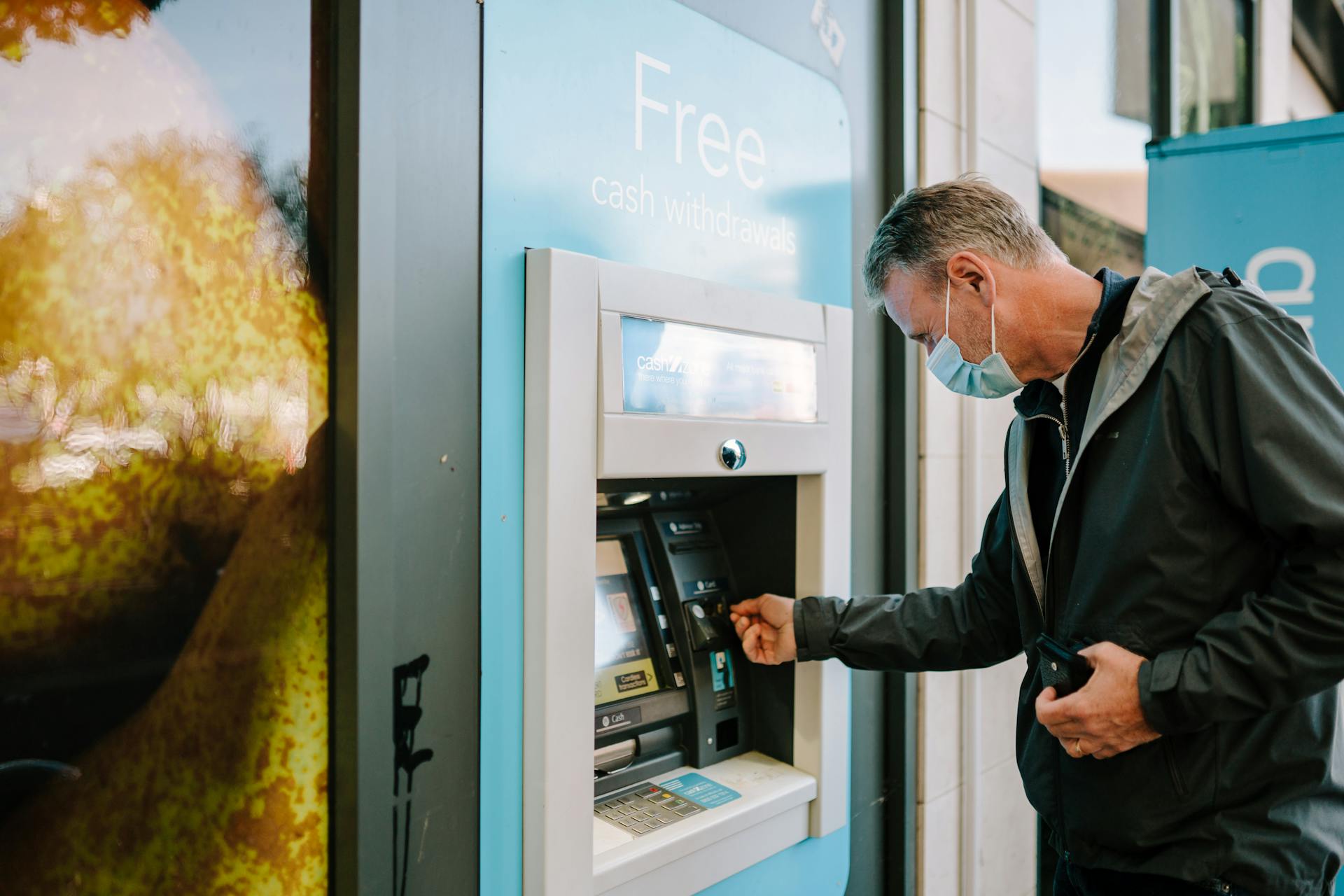
Commercial real estate loans are a significant source of funding for businesses, but with the current market conditions, many of these loans are coming due. This can be a challenging time for property owners and businesses, as they may struggle to refinance or pay off the loan.
According to recent data, over $1 trillion in commercial real estate loans are set to mature in the next few years. This is a staggering amount, and it's no wonder that lenders and property owners are getting nervous.
For property owners, refinancing a loan can be a complicated process. They need to demonstrate to lenders that they can still afford the loan, even if market conditions have changed. This can be difficult, especially if the property's value has decreased.
Many property owners are facing a perfect storm of challenges, including rising interest rates, declining property values, and increased competition for funding.
For your interest: Commercial Property Loans Nz
Commercial Real Estate Loans
Commercial real estate loans can be a complex and challenging aspect of property ownership. SBA 7(a) loans, for example, are used to help businesses purchase or refinance owner-occupied commercial properties up to $5 million.
Commercial lenders consider the debt-service coverage ratio (DSCR), which compares a property's annual net operating income (NOI) to its annual mortgage debt service, to determine the maximum loan size based on the cash flow generated by the property. A DSCR of at least 1.25 is generally required to ensure adequate cash flow.
With over $5.82 trillion in outstanding commercial debt, properties with debt coming due will face higher interest rates than at origination, as debt yields have doubled since early 2022. This can be particularly challenging for lower-performing assets, such as outdated office space, which may not be able to refinance or bear the higher cost of capital.
For more insights, see: Commercial Loans for Property
Types of Real Estate
If you're looking to understand the different types of commercial real estate loans, it's essential to know the main categories. These include loans for investment, loans for development, and loans for businesses.
For investors, understanding the loan process is crucial for securing a new loan on an existing property. This is where loans for investment come in, helping investors purchase or refinance properties.
There are six different loan types to consider, including new loans and refinance loans. These loan types can be broken down into three broad categories.
Here are the six different loan types:
- New loans
- Refinance loans
These loan types can be used for various purposes, such as purchasing or refinancing a property, or developing a new project.
SBA 7(a) Loan
SBA 7(a) loans are the most common type of SBA loan, helping businesses purchase or refinance owner-occupied commercial properties up to $5 million.
They can be used for working capital, but can also be used to purchase commercial real estate. SBA 7(a) loans are a popular choice among commercial real estate investors.
These loans are beneficial for both new and existing businesses looking to purchase or refinance owner-occupied commercial real estate.
Related reading: Sba Commercial Vehicle Loans
Debt Service Coverage Ratio (DSCR)
A DSCR of less than 1 indicates a negative cash flow, which can be a major red flag for commercial lenders.
Commercial lenders typically look for a DSCR of at least 1.25 to ensure adequate cash flow, as seen in a property with $140,000 in NOI and $100,000 in annual mortgage debt service, resulting in a DSCR of 1.4.
A property with a DSCR of .92 means there's only enough NOI to cover 92% of annual debt service, which is not ideal.
For example, a property with $140,000 in NOI and $100,000 in annual mortgage debt service would have a DSCR of 1.4, indicating a healthy cash flow.
Commercial lenders use the DSCR to determine the maximum loan size based on the cash flow generated by the property.
A lower DSCR may be acceptable for loans with shorter amortization periods, but it's essential to ensure the property has a stable cash flow.
In general, commercial lenders look for DSCRs of at least 1.25, but this may vary depending on the property type and other factors.
If this caught your attention, see: Commercial Dscr Loans
Residential
Residential mortgages are typically made to individual borrowers. They can have high loan-to-value ratios, even up to 100%, for certain types of loans like USDA or VA loans.
The most popular residential mortgage product is the 30-year fixed-rate mortgage. This type of loan allows borrowers to make regular installments over a period of time.
Residential mortgages are amortized loans, meaning the debt is repaid over a fixed period. This can help borrowers budget their payments and plan for the future.
For example, a 30-year fixed-rate mortgage can provide stability and predictability in monthly payments.
Related reading: Commercial Real Estate Mortgage Broker
What Is?
A commercial bridge loan is a source of short-term capital that helps property owners manage debt service until they complete a property transaction. This type of loan is often used by investors who have a balloon payment coming due.
A commercial bridge loan can fund a balloon payment before refinancing into a more traditional commercial loan, giving the owner some breathing room to get back on their feet.
A fresh viewpoint: Low down Payment Commercial Loans
Lenders

You can turn to big American banks for conventional commercial mortgages, with lenders like JPMorgan Chase, Wells Fargo, and Bank of America being good options.
Conventional commercial mortgages are widely available, but you may also want to consider other large entities like insurance companies or property investment firms, such as MetLife and Prudential.
Commercial bridge loan lenders are a bit harder to find, but companies like Century Capital Partners, Avatar Financial Group, and Silver Arch Capital Partners offer robust capital solutions nationwide.
If you're looking for commercial hard money loan lenders, you can consider companies like LendTerra, Prescient Capital, Ajax Funding, and Pender Capital, which offer nationwide hard money lending services.
To find a list of commercial lenders, you can visit Scotsman Guide's lengthy lender directory, which includes a wide range of lenders from different categories.
You might like: How Much Are Capital Gains Taxes on Real Estate
Loan Repayment and Prepayment
Loan repayment and prepayment terms can be complex, but understanding them is crucial when dealing with commercial real estate loans. A commercial loan's term can vary from five years or less to 20 years, with amortization periods often longer than the term of the loan.
See what others are reading: Bank Lending Program
The buyer of a commercial property with a $1 million loan at 7% would make monthly payments of $6,653.02 for seven years, followed by a final balloon payment of $918,127.64. This is an example of a commercial loan with a term of seven years and an amortization period of 30 years.
Prepayment penalties are designed to preserve the lender's anticipated yield on a loan. There are four primary types of prepayment penalties: prepayment penalty, interest guarantee, lockout, and defeasance. The type of prepayment penalty and its terms are identified in the loan documents and can be negotiated along with other loan terms.
Here are the four primary types of prepayment penalties:
- Prepayment Penalty: calculated by multiplying the current outstanding balance by a specified prepayment penalty.
- Interest Guarantee: the lender is entitled to a specified amount of interest, even if the loan is paid off early.
- Lockout: the borrower cannot pay off the loan before a specified period.
- Defeasance: a substitution of collateral, usually U.S. Treasury securities, for the original loan collateral.
Commercial properties have approximately $5.82 trillion in outstanding debt, with $2.8 trillion scheduled to mature in the next five years. This will likely face higher interest rates than at origination, as debt yields have doubled since early 2022.
Repayment Schedules
A residential mortgage is a type of amortized loan in which the debt is repaid in regular installments over a period of time.

The most popular residential mortgage product is the 30-year fixed-rate mortgage, but residential buyers have other options as well, including 25-year and 15-year mortgages. Longer amortization periods typically involve smaller monthly payments and higher total interest costs over the life of the loan.
Residential loans are amortized over the life of the loan so that the loan is fully repaid at the end of the loan term. For example, a buyer of a $200,000 home with a 30-year fixed-rate mortgage at 3% would make 360 monthly payments of $1,027.
Most loans can be refinanced when the interest rate environment changes, making borrowing cheaper. This is beneficial when interest rates come down, making borrowing cheaper.
Unlike residential loans, the terms of commercial loans typically range from five years (or less) to 20 years, and the amortization period is often longer than the term of the loan. A lender, for example, might make a commercial loan for a term of seven years with an amortization period of 30 years.
The length of the loan term and the amortization period affect the rate the lender charges, depending on the investor’s credit strength. In general, the longer the loan repayment schedule, the higher the interest rate.
Commercial loans can be anywhere from five years or less to 20 years, with some mini-perm loans for commercial properties running for three to five years.
You might enjoy: Commercial Mortgage Backed Securities Loans
Prepayment
Prepayment can be a complex aspect of commercial real estate loans. If you settle the debt before the loan's maturity date, you'll likely have to pay prepayment penalties.
There are four primary types of "exit" penalties for paying off a loan early. These include Prepayment Penalty, Interest Guarantee, Lockout, and Defeasance.
A Prepayment Penalty is the most basic prepayment penalty, calculated by multiplying the current outstanding balance by a specified prepayment penalty. This can be a significant cost, so it's essential to understand the terms of your loan.
An Interest Guarantee ensures the lender receives a specified amount of interest, even if the loan is paid off early. For example, a loan may have a 10% interest rate guaranteed for 60 months, with a 5% exit fee after that.
A Lockout prevents you from paying off the loan before a specified period, such as a five-year lockout. This can give you more time to refinance or sell the property, but it's essential to understand the terms of your loan.
You might like: Interest Only Commercial Loans

Defeasance allows you to substitute new collateral, usually U.S. Treasury securities, for the original loan collateral. This can reduce fees, but high penalties can be attached to this method of paying off a loan.
Prepayment terms are identified in the loan documents and can be negotiated along with other loan terms in commercial real estate loans.
You might enjoy: Terms for Commercial Real Estate Loans
How Many Years Is a
A 30-year fixed-rate mortgage is a popular residential mortgage product, but you can also opt for a 25-year or 15-year mortgage. The choice between these options depends on your financial situation and goals.
Longer amortization periods typically involve smaller monthly payments and higher total interest costs over the life of the loan. For example, a 30-year mortgage on a $200,000 home with a 3% interest rate would result in monthly payments of $1,027.
Unlike residential loans, commercial loans often have shorter terms, ranging from five years to 20 years. However, the amortization period can be longer, sometimes up to 30 years.
A lender might make a commercial loan for a seven-year term with an amortization period of 30 years, requiring the borrower to make monthly payments for seven years followed by a final balloon payment.
If this caught your attention, see: Current Prime Rate for Commercial Loans
Key Takeaways

Commercial real estate (CRE) valuations are expected to be impacted by a wave of refinancings due over the next few years.
The U.S. economy has proven resilient despite a sluggish close to 2023, and the Federal Reserve has signaled rate cuts of at least 75 basis points in 2024, which will likely provide conditions for the U.S. Treasury yield curve to normalize.
A sustained higher cost of capital and the need for increased equity investment will present challenges for the industry.
Location and asset class will be key for institutional investors looking for quality and value, with hotel, retail, industrial, and storage properties being standouts due to their solid fundamentals and less volatile underwriting.
Private debt is well positioned to continue expansion during the structural shift in lending, with investors seeking diversification in capital positions within CRE to protect the equity downside risk as cap rates rise.
Mezzanine fundraising was a standout in 2023, with $40.6 billion raised as of the third quarter of 2023, according to Preqin data.
Delinquencies for most asset classes, excluding office, remained relatively low and stable over the trailing 12-month period ending December 2023.
Curious to learn more? Check out: Private Equity Real Estate Investments
Debt
Debt is a crucial aspect of loan repayment and prepayment, and understanding how it works is vital for making informed decisions.
Commercial lenders look at the debt-service coverage ratio (DSCR), which compares a property's annual net operating income (NOI) to its annual mortgage debt service.
A DSCR of less than 1 indicates a negative cash flow, while lenders generally look for DSCRs of at least 1.25 to ensure adequate cash flow.
Properties with stable cash flows may be able to get away with lower DSCRs, but those with volatile cash flows may require higher ratios.
Commercial properties have approximately $5.82 trillion in outstanding debt, of which $2.8 trillion is scheduled to mature in the next five years.
Falling interest rates prior to the pandemic created conditions for CRE to borrow and refinance at lower rates, but the rapid rate increases since 2022 have changed the sector's dynamics.
Lower-performing assets, such as outdated office space, may not be able to refinance or bear the higher cost of capital.
For your interest: Commercial Loans for Rental Properties
Loan Requirements and Collateral

Commercial loans don't always require collateral, but it depends on the lender and borrower's credit profile.
Some lenders may require collateral, while others may not, making every loan and borrower unique.
Commercial loan LTVs generally fall between 65% and 85%, with some loans made at higher LTVs, but they're less common.
A maximum LTV of 65% might be allowed for raw land, while an LTV of up to 85% might be acceptable for a multifamily construction.
There are no VA or FHA programs in commercial lending, so lenders must rely on the real property pledged as security.
Do Require Collateral?
Commercial loans don't always require collateral. Every loan and every borrower is different.
Some lenders may require collateral for a commercial loan, while others may not. This depends on the terms of the loan and the credit profile of the borrower.
Collateral requirements can vary greatly from one lender to another.
Mezzanine
A mezzanine is a type of loan collateral that allows borrowers to use the value of their business or property to secure a loan.
Mezzanine financing typically involves a combination of debt and equity, with the loan amount ranging from 10% to 50% of the total value.
This type of loan is often used by businesses that have a strong cash flow but may not have enough equity to secure a traditional loan.
Mezzanine financing can be structured as a senior or junior loan, with the senior loan having priority over the junior loan in case of default.
The interest rate on a mezzanine loan can be higher than a traditional loan, but it may also offer more flexible repayment terms.
Mezzanine loans often require a personal guarantee from the borrower, which can put their personal assets at risk.
Additional reading: Owner Financing in Real Estate
Value Ratios
A loan-to-value (LTV) ratio is a figure that measures the value of a loan against the value of the property. The LTV is calculated by dividing the amount of the loan by the lesser of the property's appraised value or its purchase price.
A different take: Best Commercial Property Loans

For example, a $90,000 loan on a $100,000 property would have an LTV of 90%. Borrowers with lower LTVs will qualify for more favorable financing rates than those with higher LTVs, because they have more equity in the property, which equals less risk in the eyes of the lender.
High LTVs are allowed for certain residential mortgages, with up to 100% LTV allowed for VA and USDA loans, and up to 96.5% for FHA loans. Commercial loan LTVs, on the other hand, generally fall into the 65% to 85% range.
A maximum LTV of 65% may be allowed for raw land, while an LTV of up to 85% might be acceptable for a multifamily construction loan.
SBA
SBA loans are backed by the Small Business Administration and are beneficial for new and existing businesses looking to purchase or refinance owner-occupied commercial real estate.
SBA 7(a) loans are the most common type of SBA loan, used to help businesses purchase or refinance owner-occupied commercial properties up to $5 million.
On a similar theme: Small Business Administration Disaster Loan Application
SBA 7(a) loans can also be used for working capital, but can also be used to purchase commercial real estate.
SBA 504 Loans are similar to SBA 7(a) loans, but the SBA does not have a maximum loan amount.
These loans can be used for up to 90% of the purchase price of commercial real estate, regardless of the size of the deal.
Broaden your view: Sba Commercial Real Estate Loans
Sources
- https://www.investopedia.com/articles/personal-finance/100314/commercial-real-estate-loans.asp
- https://www.reonomy.com/resources/commercial-real-estate-loans/
- https://internationalbanker.com/banking/commercial-real-estate-loans-a-ticking-time-bomb-for-us-banks/
- https://www.sageregroup.com/multifamily-commercial-loans-coming-due/
- https://rsmus.com/insights/industries/real-estate/commercial-real-estate-faces-new-financing-landscape.html
Featured Images: pexels.com


